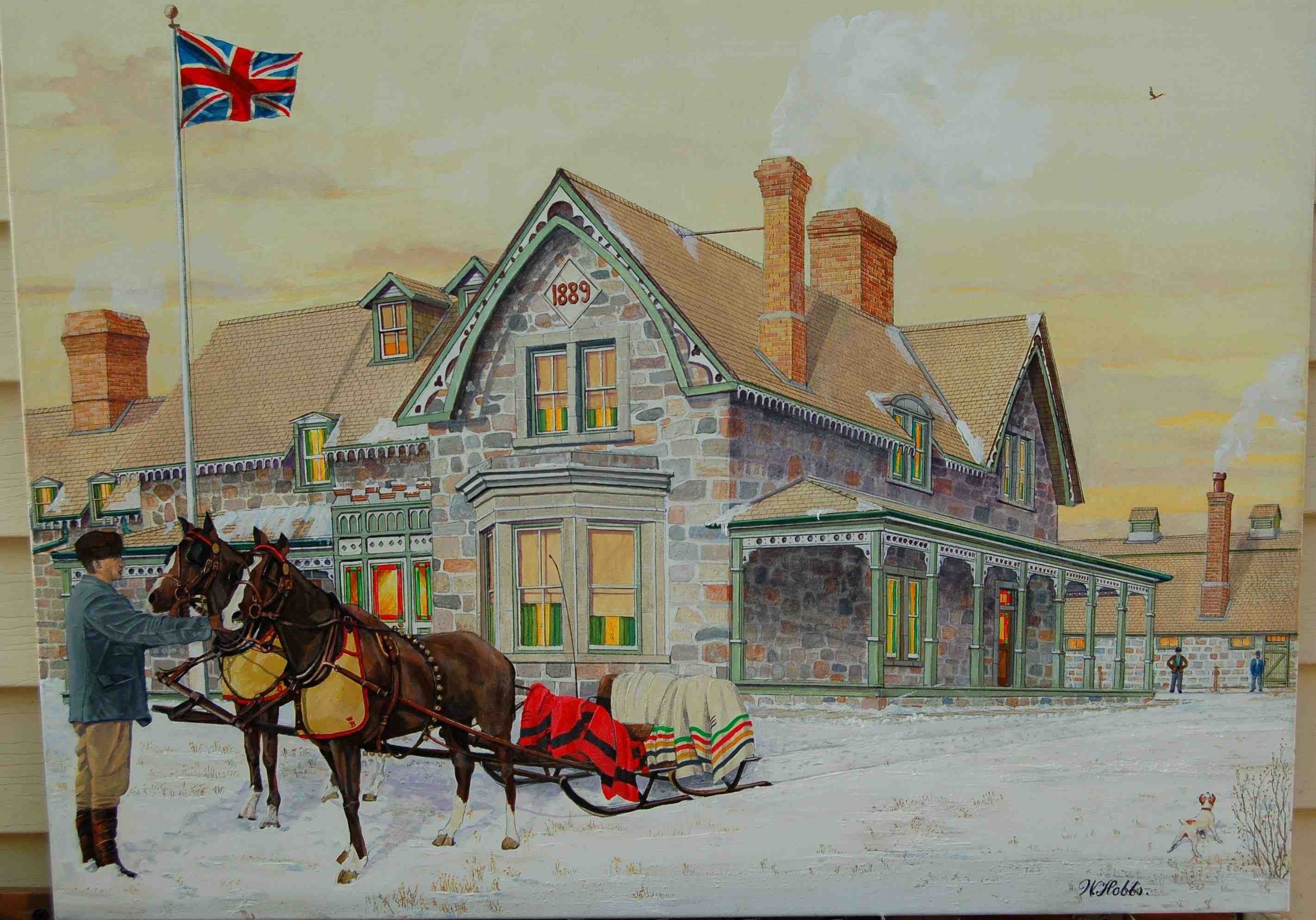The Moosomin Spectator, October 13, 1898, provides an account of fox hunting on the Saskatchewan prairie at Cannington Manor. One rider falls in a well, two tangle with barbed wire, and a lady rider falls in a muddy field.
Cannington Manor, 25 miles south of Moosomin, is, at this time, a village of 200 people, the heart of a 2,600-acre colony with an agricultural college intended to teach affluent English gentlemen bachelors how to farm. It includes a church, hotel, general store, flour and grist mills, sawmill, meat packing plant, two cheese factories, and a two-storey 26-room stone mansion with hand-carved mantle fireplaces and gilt-framed oil paintings, ballroom, billiard room, and servants’ quarters.
Farming was sandwiched between the activities of theatrical, literary, musical, and art societies, and cricket, polo, tennis, football and fox hunting. The hounds were imported from the Isle of Wight, while thoroughbred horses were housed in a fieldstone stable with mahogany stalls and brass nameplates. Hunters set out with correct top boots, breeches and red hunting coats. Still, it wasn’t quite like England; the foxes were actually coyotes, referred to by the Spectator as wolves.
At a Monday hunt, two hunters were observed “running into their wolf in Mr. Daniel’s pasture, where they killed him in the open after a well-hunted run of something like two hours’ duration. Several casualties are reported, one eager and presumably thirsty sportsman being rescued with difficulty from the bottom of an old well. Two gentlemen of suicidal turn of mind forced their unfortunate gees at a gallop through Mr. Gruggen’s barbed wire fence, and the mud-plastered condition of a lady’s habit suggest a complete cropper in a soft spot.”
On Saturday, hounds, horses and hunters trampled the brush on one farm. “In the end our friend saved his brush,” said the Spectator, “but it must have been a sadly bedraggled one.”
Cannington Manor did not prosper. In 1900, when the CPR by-passed it by seven miles in building a new branch line, Cannington Manor became a ghost town, less than two decades after it had been founded. Today, it is a provincial park. The sound of the hunter’s horn no longer echoes on the prairies.
Unfamiliar Canadian history stories 088
